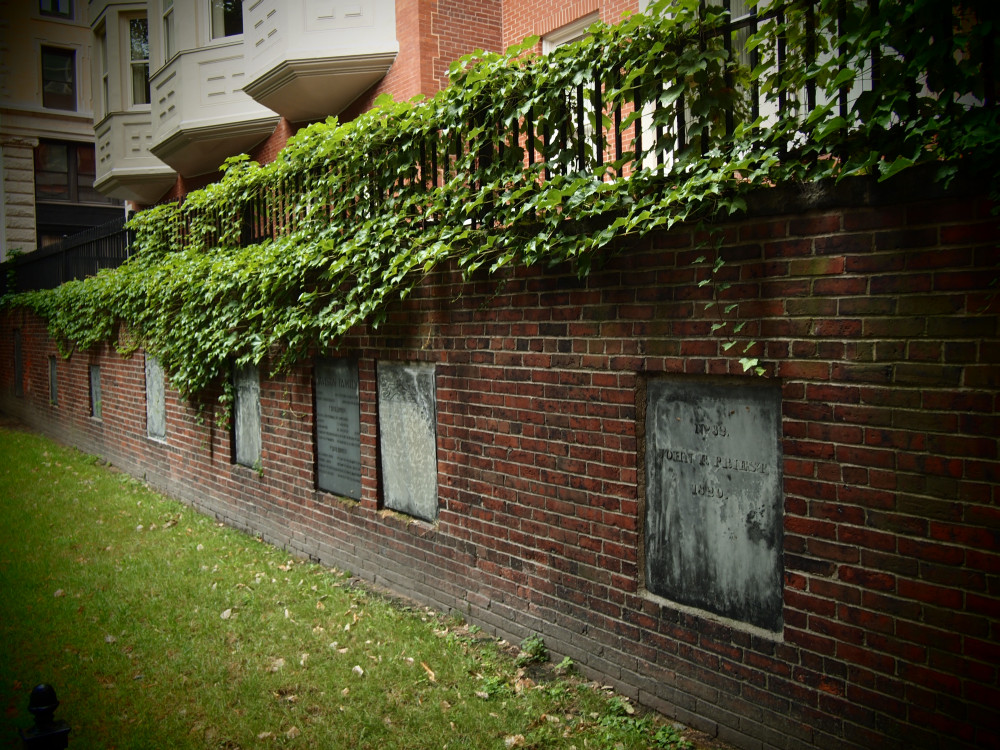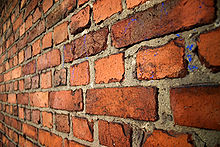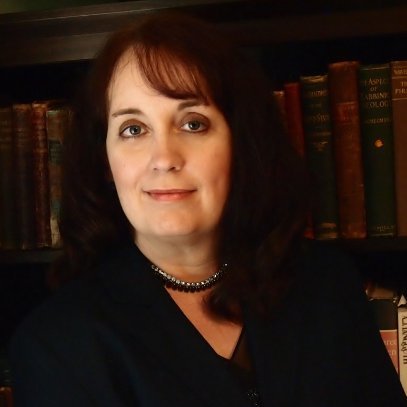By: Cheri Daniels, KAO Editor and KHS Head of Reference Services
 In the previous issue, I outlined some of the major pitfalls we Family Historians fall victim to as we unknowingly create our own brick walls. The tips covered to help you avoid those traps can also be helpful when encountering the random ‘brick wall’ or, as some ironically refer to it as: ‘the dead end’. By contrast, the ‘brick wall’ or ‘dead end’ that is encountered instead of created usually appears at an unexpected juncture of your research journey. Up until this point, you may have followed excellent genealogical methods and have continued right along adding to your pedigree chart, with abundant sources and citations to match. And then it happens….the trail goes cold…your ancestor appears to vanish into thin air.
In the previous issue, I outlined some of the major pitfalls we Family Historians fall victim to as we unknowingly create our own brick walls. The tips covered to help you avoid those traps can also be helpful when encountering the random ‘brick wall’ or, as some ironically refer to it as: ‘the dead end’. By contrast, the ‘brick wall’ or ‘dead end’ that is encountered instead of created usually appears at an unexpected juncture of your research journey. Up until this point, you may have followed excellent genealogical methods and have continued right along adding to your pedigree chart, with abundant sources and citations to match. And then it happens….the trail goes cold…your ancestor appears to vanish into thin air.
In reality, every genealogist has encountered this problem, at some point, if they have conducted any significant amount of research. So, don’t despair, you are not alone, and you might be happy to know that there are several methods you can employ to help chisel away the mortar between the bricks, or in some cases, drive around that wall. I personally like the idea of driving around the wall because this new challenge you are encountering can quickly become just another detour on your genealogical journey. Always remember that conducting well sourced genealogical research is a challenging endeavor that requires hard work, a lot of time, solid research skills, and determination. Now, let’s explore some tips to help you overcome these ancestor challenges!
 1. Map Your Progress – Literally!
1. Map Your Progress – Literally!
Sometimes the best way to discover a new or fresh direction is by visually taking into account the journey your ancestors made prior to the appearance of the brick wall. Make a large print out or copy of a regional/national map and pinpoint your ancestral movements. But here is the key: map as many lines as you can! Make sure you map peripheral lines if you know them. One thing I love about this approach is that it can show you areas of unfinished business. Let’s face it, Kentucky was settled by a group of pioneers that didn’t always stay put once they got here. Sometimes they moved across county/state lines, or they left their parents/siblings in another county/state. Some of them bought and sold various chunks of land, or were involved in the sale/probate of family parcels that required paperwork in the county of origin. When a significant family event occurred, the family members were usually called in to help with legalities, even if it meant travelling a fair piece to get there. Some of the legalities that might have affected your ancestor, and which were possibly recorded in a neighboring county/state are: Land transactions, estate dispersals, guardianships, dowers, depositions, wills, “promiscuous” or absentee taxes, marriage bonds, etc. One other way this mapping can help you is in the area of migration. Plotting your ancestral movements can possibly identify a route or direction of entry into Kentucky, which can then lead to clues on previous states of residence.
Additional tip from the KHS Library: Look for the book: Atlas of Historical County Boundaries: Kentucky[i]. This book covers the boundary changes of each Kentucky County. You will be surprised to see the amount of boundary shifting that occurred over the decades! By keeping track of this important information, you can more successfully focus your research efforts.
This is another visual exercise in tracking your ancestors’ journeys. There are three main areas that I would encourage including on your family timeline: Family life events, broad (national/local) historical events, and official record limitations (record keeping legislation/initiation/cessation, courthouse gaps/disasters). By including these three layers in your timeline, perhaps even color coded for easier visual distinction, you can gain invaluable clues that will point you in the right record direction! This one can also go hand in hand with the above mapping exercise. When the clustering of family events gets to be too much for the regional map to hold, supplement with a timeline of events, which can still be visual enough to catch important family events or migrations. Also, this approach will help in quickly referencing record keeping timelines. After all, you don’t want to spend a lot of time searching for a marriage, birth or death record when it is clear that the record had not been kept by local or state officials during the decade you are researching.
 3. Seek Out Supplemental Sources
3. Seek Out Supplemental Sources
This tip is a great one for any genealogy journey, but in the cases of solidified brick walls, it just may be your lifeline to new information. We cannot deny that there are numerous instances of courthouse disasters that destroyed the paper trails in certain areas – or nationally – 1890 census for example. However, many areas attempted reconstruction of the lost records by using local supplemental records, such as school records, charred remnants, church records, official records kept for a different purpose or in a different location, etc. As you look for these reconstructed records, keep in mind that that they may not be with the current courthouse. You may have to seek them out in various regional institutions, such as historical societies or universities. If a locality did not reconstruct any records, try a bit of reconstruction yourself: seek out school, funeral home, church, and business records on your own. In some special cases, there have been large local research projects that can also help, such as genealogy studies, oral histories or biographies. One last piece of supplemental advice: as mentioned in the previous article, don’t forget your peripherally distant cousins. If you can connect to any distant relatives, you may be very surprised to learn about a family Bible or marriage certificate that was passed down within the ranks of a different branch. The information found within one of these sources can do some serious brick wall damage!
Distant relatives and supplemental resources have provided a wealth of primary source information for my research. In one instance, my 3rd Great Grandfather, Jacob Fliehmann, who arrived from Bavaria in 1847 had his naturalization papers reconstructed after a courthouse fire due to remnant intent records that survived and are now housed in a local University[ii]. As a supplemental surprise, I also found a transcription of his naturalization papers in a neighboring state and unexpected county as he slowly migrated to his permanent county of residence[iii]. Apparently, it was a requirement to present your naturalization papers to the local courthouse of your new state/county of residence. In other instances, I have received original Bible records, photos and school rosters from distant relatives who no longer wanted the responsibility of housing these old and fragile items. Don’t forget to check our KHS catalog to see what wonderful supplemental resources we have in our collection, such as: original Bible records, school yearbooks, memory books, church records, business ledgers/records, genealogy research, photograph collections, diaries and original correspondence.
As emphasized in the last issue, primary sources are vitally important to thorough research. I will take this a step further and declare that genealogy can only be truly labeled as such when the end result is supported by extensive and well documented/cited primary sources. Don’t get me wrong, I am a huge fan of collecting oral traditions and information nuggets that might lead me to the needed primary source verification, but just because a tradition has been printed or repeated many times does not make it a reliable piece of information. When navigating through brick wall territory, make sure you go back and closely analyze every citation with a skeptical eye. Remember that part of your role as a family historian is performing the duties of family detective. Retracing your research to make sure it is founded upon sound primary sources is a great way to uncover record gaps or false information that led your journey to the brick wall.
I know you’ve heard this one before, but it still holds true: pay attention to various spellings of the surnames. This is still fantastic advice, but following it can be more complex than it sounds. There is the simple step of just scanning the last names that begin with the same letter as your ancestor’s last name, or at least scanning the cluster of surnames above and below your ancestor’s listing. Even though most of us do not have time to explore extensive name spelling pedigrees, sometimes it can be just the key to finding a way around your brick wall. Whenever you do come across a variant in the name spelling, make a note of it and keep it handy in the way of a list to consult as you continue your research. This list can save you time as it grows and as you continue to refer back to it along the way. Also, desperate times call for desperate measures: sometimes it is necessary to scan all of the surnames in a local record index due to horrible misspellings that occurred at the hands of the local officials. Oh, and don’t forget name reversal! Sometimes the person recording the information might have reversed the surname with the given name.
In my family there was more than one significant name change to keep track of in my notes. In one instance, our family dropped a middle syllable which distinguished us from the other branches throughout the country. In another, our newly immigrated ancestors from Germany tried to keep the traditional spelling alive, but the new generation, born as native citizens, decided to “Americanize” not only their surnames but also their given names. In addition to this bit of genealogy fun, sometimes the “Americanized” versions were spelled various ways throughout various branches of the families!
This is not a suggestion to dismiss my earlier advice of securing your primary source documentation. Rather, it is an encouragement to slowly scour gossip or “social” columns in the local newspapers (when available). In a sense, many of these little snippets of local gossip can be rife with mistakes, but in some cases, they can provide amazing supplemental details that can help you chisel away some brick mortar! In the category of primary or secondary sources, a newspaper can be both, depending on who wrote the article versus who provided the information therein. Regardless, the information is contemporary to the ancestors and can be a great source of information that may not be found elsewhere. Also, if you are visiting a relative and they happen to tell a story about an ancestor, ask lots of questions to root out more information and then go home and write it down immediately. The story may have clues that could come in handy later. Besides, when putting together a published version of your family history, these snippets or stories can add wonderful color and interest to your pedigree!
In Pendleton County, the Falmouth Outlook [iv]had a very healthy social column that was divided into segments according to their smaller rural communities. By just following the little communities that I knew my family resided in, I uncovered wonderful family trails and tales. For instance, I learned that my great grandparents eloped to Newport (in the neighboring county), accompanied by friends, and that my great grandmother, Nellie Cox Beyersdoerfer, wore a blue serge coat as her wedding attire. Nellie was also touched at a young age by the death of her younger brother Eugene Lanson Cox when he was in his mid twenties. I had his death certificate, and knew that he died of tuberculosis, but the social column added little snippets of his decline as the illness took over. These entries also gave me a list of those community members and family members who visited the family home, both during his illness and during the mourning period after his passing. While I remember my great grandmother telling us about her dear brother and that he died, it was too painful for her to relate any details beyond the general facts. The newspaper helped fill in the details of the event, provided a valuable list of names of local or visiting family members and painted a clearer picture of the grieving family.
This list of tips represents a mere point of departure when considering the best approach for brick wall demolition. I have heard so many stories of serendipitous breakthroughs that came at just the right moment or from a completely unexpected direction. When dealing with these types of challenges your best weapon is an open mind and inquisitive spirit. Question everything that you know and don’t be afraid of the direction your ancestors’ lives may eventually take you. One last piece of advice, left over from the previous issue: consider taking a break on the line you are stuck on. Sometimes the break can help bring you out of preconceived notions that might have hindered a clear view of your progress. If your progress view is severely foggy, consult a genealogy buddy when you return for some added clarity! And don’t forget: enjoy the journey!
 About the Author: Cheri Daniels is the Head of Reference Services for the Martin F. Schmidt Research Library and Editor of Kentucky Ancestors Online at the Kentucky Historical Society. She holds a B.A. in History and an M.S. in Library Science, both from the University of Kentucky. For over 25 years she has worked in various types of libraries, including 11 years at the University of Kentucky, and pursued her genealogical passion through her own research along the way. Other roles include: KLA Genealogy/Local History Round Table Chair, DAR Member, PR Director for the Harrison County Heritage Council, blogger at Journeys Past, Co-founder/President of Pastology, LLC, and speaker on the regional/national stage (NGS Conference: 2012/2014, NPR/WEKU: 2013, RootsTech Conference: 2014, Mysteries at the Museum/Travel Channel: 2014, WTVQ Kentucky History Treasures: 2014, 2016)
About the Author: Cheri Daniels is the Head of Reference Services for the Martin F. Schmidt Research Library and Editor of Kentucky Ancestors Online at the Kentucky Historical Society. She holds a B.A. in History and an M.S. in Library Science, both from the University of Kentucky. For over 25 years she has worked in various types of libraries, including 11 years at the University of Kentucky, and pursued her genealogical passion through her own research along the way. Other roles include: KLA Genealogy/Local History Round Table Chair, DAR Member, PR Director for the Harrison County Heritage Council, blogger at Journeys Past, Co-founder/President of Pastology, LLC, and speaker on the regional/national stage (NGS Conference: 2012/2014, NPR/WEKU: 2013, RootsTech Conference: 2014, Mysteries at the Museum/Travel Channel: 2014, WTVQ Kentucky History Treasures: 2014, 2016)
[i] John H. Long, ed., Gordon DenBoer, comp. Atlas of Historical County Boundaries: Kentucky (New York, 1995).
[ii] University of Cincinnati, comp. Hamilton County Ohio Citizenship Records 1837-1916. (http://www.libraries.uc.edu/libraries/arb/archives/collections/natdec/index.html)
[iii] Edward E. Barton. E.E. Barton Collection. (Lexington, University of Kentucky, Photographic Services.) Microfilm.
[iv] Falmouth Outlook (Falmouth, Ky.) 3 February 1911, 5 March 1915.
After realizing what occurred that nix want alter.
